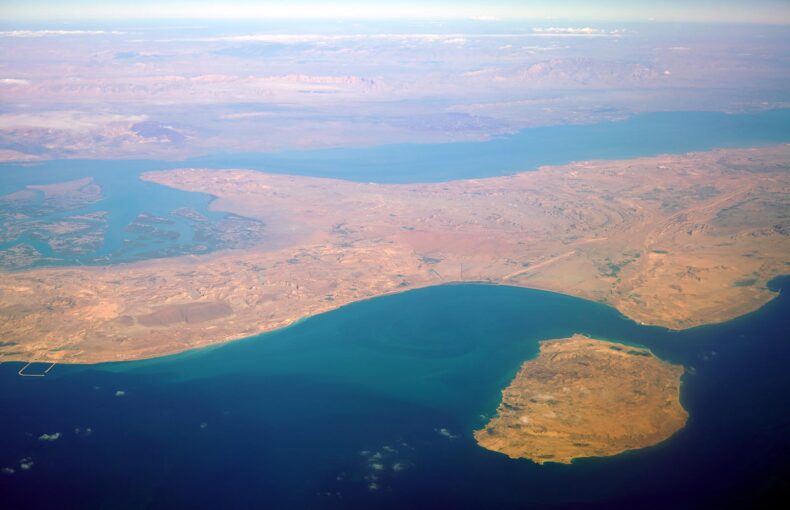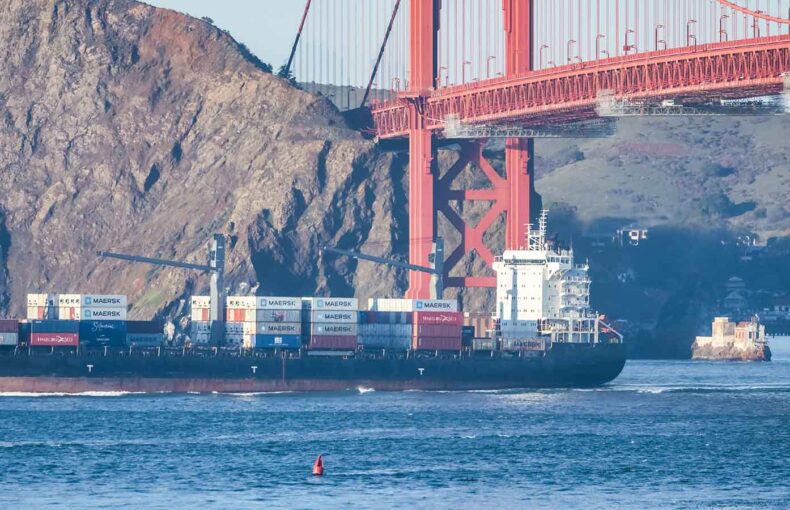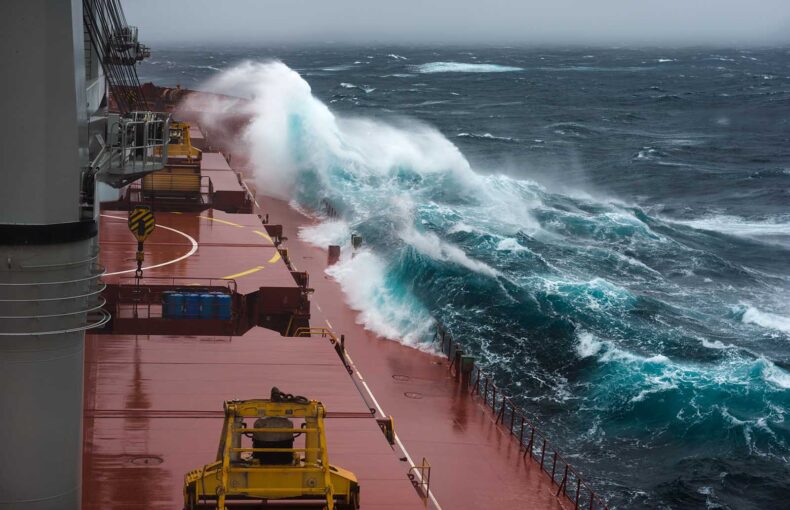The Port of Cleveland: Unexpectedly Vital in Pandemic Times
During times of unprecedented uncertainty around ports dealing with extensive backlogs, Ohio port operations have become essential to the global supply chain, servicing businesses across a wide variety of industries.
Over the last year retailers and manufacturers have had to bear the burden of higher costs and longer wait times to receive products due to the global supply chain crisis. According to data from Drewry Shipping reported by CNN, the composite cost of shipping a 40-foot container on eight major East-West routes reached $9,613 over the summer. That’s more than a 360% increase from 2020. The crisis is primarily defined by an influx of traffic at major ports both at home and abroad. There are numerous factors that can explain why operations at America’s ports aren’t functioning within a reasonable amount of time like worker shortages caused by the pandemic and high levels of consumer demand. Much of the focus around the recent supply chain crisis is placed on coastal ports like Los Angeles, which, according to Bloomberg, has seen an average wait at anchor time of 20.7 days.
Unusual problems require out-of-the-box solutions. For shippers, that could mean relying on port operations in places like Ohio instead of in the standard locations like New York or California. Ports that most shippers usually rely on are dealing with extensive backlogs leading to bottlenecks throughout the supply chain. That’s where port operations in Ohio serve as an asset to shippers and consumers worldwide; the benefits that come with diverting shipments through the Great Lakes are greater than you likely imagined.
The state of Ohio features 8 major ports: Ashtabula, Cleveland, Conneaut, Fairport Harbor, Lorain, Marblehead, Sandusky, and Toledo.
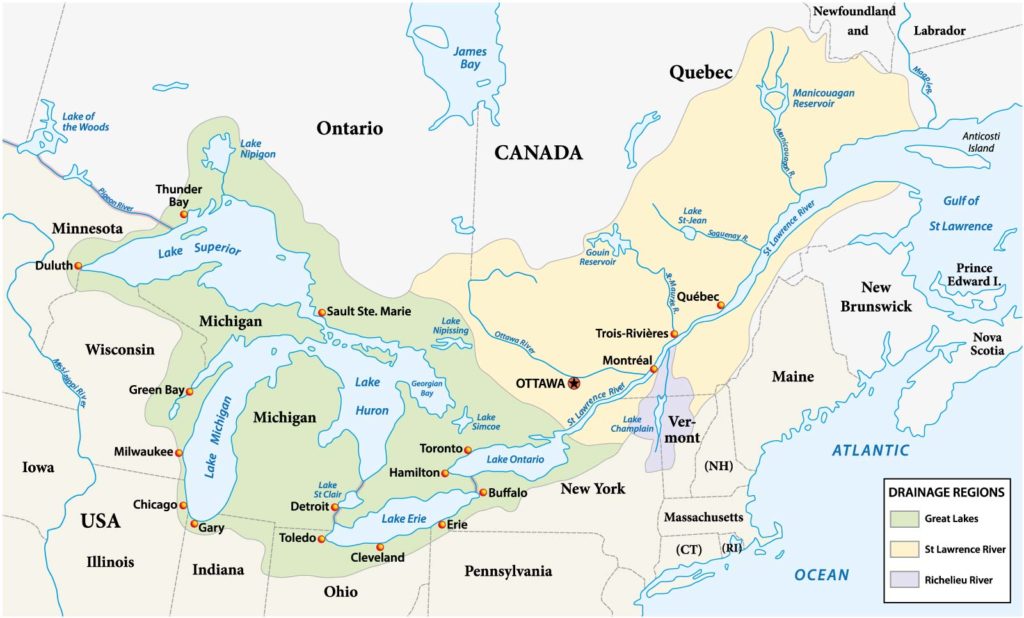
In a recent interview with Spectrum News One, Jade Davis, the vice president of external affairs for the Port of Cleveland, says, “We could probably handle upwards north of 100,000 containers here at the Port of Cleveland. We’re handling a little more than 15% of that right now.” Many of the shipments coming into Ohio’s ports are manufacturing-related and not the consumer products shipped from Asia to the west coast ports.
Why Ohio Port Operations Are Essential to the Global Supply Chain
By servicing businesses across such a wide variety of industries, the Port of Cleveland makes life easier for shippers and consumers across the nation. That’s especially the case during times of unprecedented uncertainty around ports dealing with extensive backlogs. The Port of Cleveland provides enough versatility to handle much of those backlogs. The infrastructure, location, and personnel the Port of Cleveland provides shippers with mean port operations here are just as, if not more efficient than port operations elsewhere.
There are numerous ways that port operations in Cleveland and throughout Ohio can alleviate the supply chain woes that are currently plaguing major ports across the globe. From intermodal shipping options to express routes headed directly to Europe, the Port of Cleveland has been vital in helping shippers meet the demands of their customers. Additionally, the Port of Cleveland recently spent millions on facility expansions and upgrades which help make it so the port can handle an influx in activity. Ships being able to use Lake Erie as an alternative to major ports dealing with extensive backlogs could be instrumental in improving supply chain woes. The annual capacity of the Port of Cleveland is 100,000 containers, and accepting cargo from overwhelmed ports like those in New York is something the Port does gladly as long as that capacity limit isn’t threatened.
An 8-Hour Drive From Half of All US Households
Just from looking at a map, it would be easy to assume that Lake Erie and the rest of the Great Lakes don’t have much to offer to people on the other side of the globe. After all, it takes a considerable amount of research to get an accurate understanding of how the Port of Cleveland, settled on the shores of Lake Erie, aids markets located overseas. The importance of Lake Erie when it comes to shipping is demonstrated by the fact that the Port of Cleveland is just an 8-hour drive from half of all households in the United States. A few of the ways Lake Erie serves business interests both at home and abroad include:
The Cleveland-Europe Express
Ever since 2014, the Port of Cleveland has offered local businesses the opportunity to have their goods shipped in containers directly to European markets in roughly two weeks. Twice a month, a container vessel sets sail from Antwerp, Belgium en route for the Port of Cleveland. The goods that are shipped via this service include scrap metal, retail goods and machinery.
The Great Lakes-St. Lawrence Seaway
Most people that are unfamiliar with the Great Lakes are unaware of the fact that they contain a route leading directly into the Atlantic Ocean. The Great Lakes-St. Lawrence Seaway, also known as the HwyH20, completed construction in 1958. Over 25 million tons of materials were shipped using the newly created seaway during its inaugural year in operation. The Seaway flows from west to east, covering the span of 2,300 miles from Minnesota to the Atlantic Ocean. The Great Lakes-St. Lawrence Seaway sees that the water from the Great Lakes travels into the Atlantic Ocean due to a series of manmade locks and canals built to make the rivers to make it easier for ships to navigate.
Intermodal Shipping Options
Another benefit that the Port of Cleveland offers is easy access to trucking and locomotive routes that are instrumental in helping goods reach their destinations. Having access to numerous major markets that can be reached within a matter of hours, including Chicago, Detroit, and Pittsburgh, means options for transporting goods at the Port of Cleveland are more robust than other ports in the area. The Port of Cleveland receives Class 1 rail service from CSX and Norfolk Southern and its main gate provides truckers with instant access to numerous freeways and interstates, including I-90, 77 and 71.
Behind the Scenes on Ohio Port Operations
The Port of Cleveland welcomed its first steamboat in the year 1818, and formally started its maritime operations several years later with the formation of the Department of Port Control in 1825. During the following decade, the opening of the Ohio and Erie Canal was instrumental in helping the city grow to more than 600,000 residents. Shortly afterwards, in 1842, the port accepted its first iron ore shipment, laying the groundwork for it to eventually become the area’s core industry. The construction of the Soo Canal, which unites Lake Superior and Huron, led to the Port of Cleveland becoming a vital transshipment location for shipments containing lumber, coal, farm produce, and more iron ore.
The economic downturn as a result of the Great Depression delivered a devastating blow to the Port of Cleveland, but World War II helped facilitate a slow recovery, which reached its apex when Cleveland’s population peaked at 1 million residents in 1950 as the Port thrived. The 1959 opening of the St. Lawrence Seaway provided large cargo ships with the ability to navigate from the Atlantic Ocean to the Port of Cleveland, contributing to the Port’s success.
The current managing body of the Port of Cleveland, the Cleveland-Cuyahoga County Port Authority, was established in 1968 to manage expanding operations. Throughout recent decades the Port of Cleveland has contributed to economic development throughout the area. The Cleveland-Cuyahoga County Port Authority introduced a Common Bond Fund program in 1996 to help finance fellow organizations and business interests throughout the state. The Cleveland-Cuyahoga Port Authority has also been instrumental in helping to make Lake Erie an asset for both residents of the area and businesses to enjoy. Toward this goal, back in 2012 the Port opened the Cleveland Lakefront Nature Preserve as an urban wildlife haven for nature observers. Additionally, the port is surrounded by numerous museums and sporting attractions, including the Rock & Roll Hall of Fame and FirstEnergy Stadium.
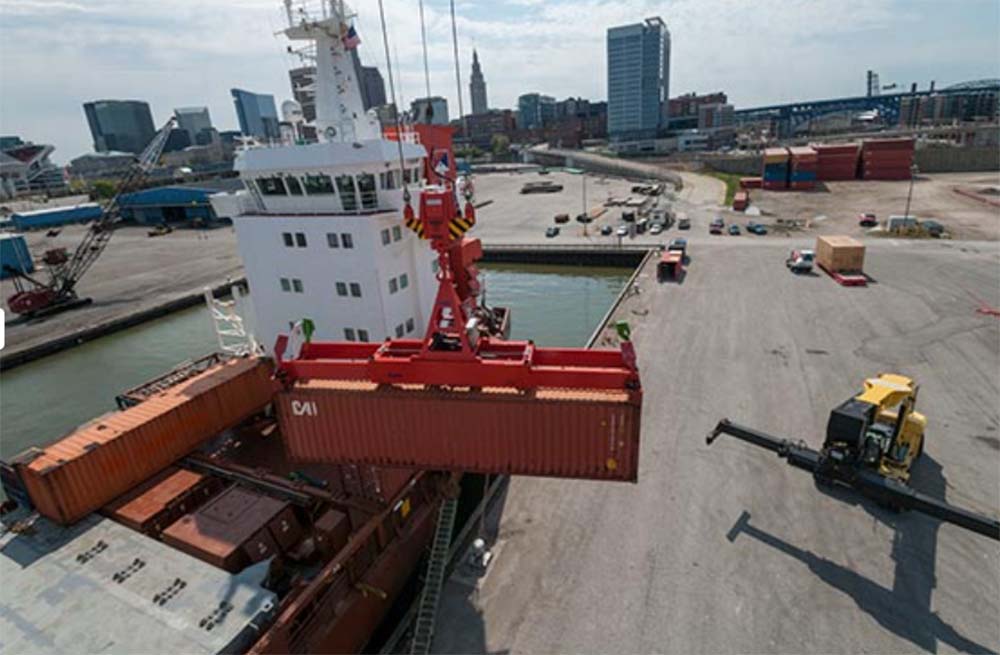
Credit: FreshWater’s managing photographer, Bob Perkoski
The Economic Impact of Ohio Port Operations
The impact the Port of Cleveland has on the regional economy is immense. People unfamiliar with the area are likely to be caught off guard by how much of the region’s economic activity the Port of Cleveland is responsible for. The impact the Port of Cleveland has had on the area has fluctuated over time. For instance, port operations tapered off around the 70s and 80s, but began to rebound during the 21st century.
How Much Revenue Does the Port of Cleveland Generate?
The Port of Cleveland has come a long way in economic development since its inception. It has routinely had periods of economic prosperity, which helped it survive its downturns. During its first year in operation, it received $196,000 in imports and just $38,000 in exports. Fast forward to 2021, and exports at the Port of Cleveland accounted for $181 million in revenue while the import total reached $360 million according to OEC. The Port of Cleveland is responsible for generating more than $3.5 billion in revenue annually and is one of the region’s biggest job creators.
How Many Jobs Are Generated by the Port of Cleveland?
The Port of Cleveland is currently responsible for creating nearly 18,000 jobs. Economic activity at the Port of Cleveland has steadily ramped up over the course of the past decade. From a 5-year period from 2010 to 2015, bulk tunnage rose 82% and jobs increased by 60%.
How Much Cargo Is Shipped From the Port of Cleveland?
The economic activity generated by the Port of Cleveland is largely due to the nearly 13 million tons of cargo that travel through the Cleveland Harbor annually, which is significantly more than any other port in the state. Most of the cargo that the Port of Cleveland receives is from Europe and Canada, although in recent years, tariffs have caused European cargo to decline as Canadian cargo has increased.
What Goods Ship Out of Ohio Ports?
There’s a wide variety of goods that travel through the Port of Cleveland before reaching their final destination. Ohio is home to a number of major industries, including agriculture, coal mining, steel production, and more. Manufacturers take advantage of the quick access Lake Erie provides to European markets. Given the access that port operations in the Great Lakes have to international markets, better alternatives are few and far between. Some of the goods that are commonly exported from the Port of Cleveland include:
- Coal: Much of the coal that is exported from the Port of Cleveland is mined in the Appalachian coal mines of Southeastern Ohio or West Virginia. Access to Lake Erie allows coal producers to reap the benefits of European markets.
- Food and Food Products: The State of Ohio and the midwestern region in general is one of the world’s biggest providers of farm crops like wheat, soybeans, and corn. Thanks to the Great Lakes, regional farmers are able to reap the benefits that come with having access to a global market.
- Steel and Iron: The Port of Cleveland originally served as a crucial component to the area’s economy because it allowed steel mills to easily receive and ship materials. In fact, Cleveland-Cliffs, one of the largest steel producers in the nation, is strategically located on the banks of the Cuyahoga River, which provides fast and easy access to international markets.
- Limestone: Another raw material that travels through the Port of Cleveland often is limestone. Limestone has numerous uses that range from water purification to construction, and the versatility it provides makes it a highly valuable commodity. Given all of the potential uses for limestone, regional limestone producers benefit greatly from the access Lake Erie provides to customers from across the globe.
The goods that ship from the Port of Cleveland have a substantial effect on not just the regional economy, but the global one as well. Employees at the Port of Cleveland play a crucial role in the successful operations of businesses everywhere. This is why they go above and beyond to ensure that materials reach their intended destination within a reasonable amount of time, even in the face of challenges like the pandemic.
A Personal Observation on the Port of Cleveland
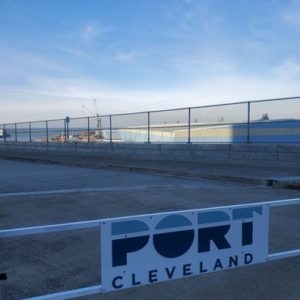 In the new year, I decided to take a trip to the Port of Cleveland. The Port of Cleveland serves as an economic driver for residents and families in Northeast Ohio, as well as global businesses. The area surrounding the Port of Cleveland is surprisingly calm during the afternoon prior to reaching the actual shoreline, where the work takes place.
In the new year, I decided to take a trip to the Port of Cleveland. The Port of Cleveland serves as an economic driver for residents and families in Northeast Ohio, as well as global businesses. The area surrounding the Port of Cleveland is surprisingly calm during the afternoon prior to reaching the actual shoreline, where the work takes place.
Just driving through the streets leading up to the Port of Cleveland can be deceiving. As one approaches the Lake Erie shoreline from downtown Cleveland, the usual hustle and bustle calms down briefly, only to be replaced by the activity taking place at the Port. Even though access to the Port of Cleveland is restricted, it’s easy to get a glimpse of all of the activity taking place due to the constant movement of trucks and cranes carrying containers full of goods. It’s somewhat perplexing to imagine that the goods being transported through the Port of Cleveland could be on their way to destinations across the ocean in Europe. The reality is that the Port of Cleveland has been essential throughout the pandemic in helping to relieve more overwhelmed international shipping ports.
People who haven’t been to an Ohio port likely don’t have context for how that can be the case since Ohio isn’t surrounded by an ocean. Upon arriving at the Port of Cleveland, the importance it has to global commerce becomes evident just by glancing at the lake and observing the ships and cranes that surround the port. Several moments of observation provide visitors with an idea of how efficiently cargo moves throughout the port, even in the face of uncertain circumstances.
The pandemic has had an overwhelming impact on the way workers of all industries operate. The same holds true for operations at the Port of Cleveland. Fortunately, the pandemic’s impact on port operations hasn’t caused noticeable interruptions. Based on observations made at the port, office operations have gone remote while containers travel throughout the port. The intermodal shipping options offered by the Port of Cleveland are on full display as semi-trucks can be seen hauling containers away from ships docked on the lake. Although there weren’t any trains moving throughout the port just then, there are multiple tracks that make it easy to transport containers to and from ships.
One of the many obstacles that the pandemic has presented employers of all industries with is a shortage of workers. Worker shortages are typically caused by a high number of call-offs or people finding new careers entirely. Even though numerous area industries are having to deal with worker shortages, the Port of Cleveland hasn’t. Dozens of employees could be seen navigating throughout the jam-packed parking lots that surrounded the docks where containers were being loaded and unloaded. Port of Cleveland VP of External Affairs Jade Davis adds, “We have the capacity of both workers, we have the capacity of both space, and we have the capacity of both equipment here in the Port of Cleveland.”
An observation about the Port of Cleveland that grabs the attention of most visitors of Cleveland’s lake shore is the weather. Working at the Port of Cleveland entails enduring bone-chillingly cold temperatures due to gusts from the lake. Taking that into consideration, it’s nothing short of a minor-miracle that the port hasn’t hasn’t had to deal with more worker shortages due to call-offs due to illness. The fact that the Port of Cleveland hasn’t dealt with crippling worker shortages is one of the biggest contributing factors as to why port operations here have been so crucial in relieving other ports.
 Written by
Written by